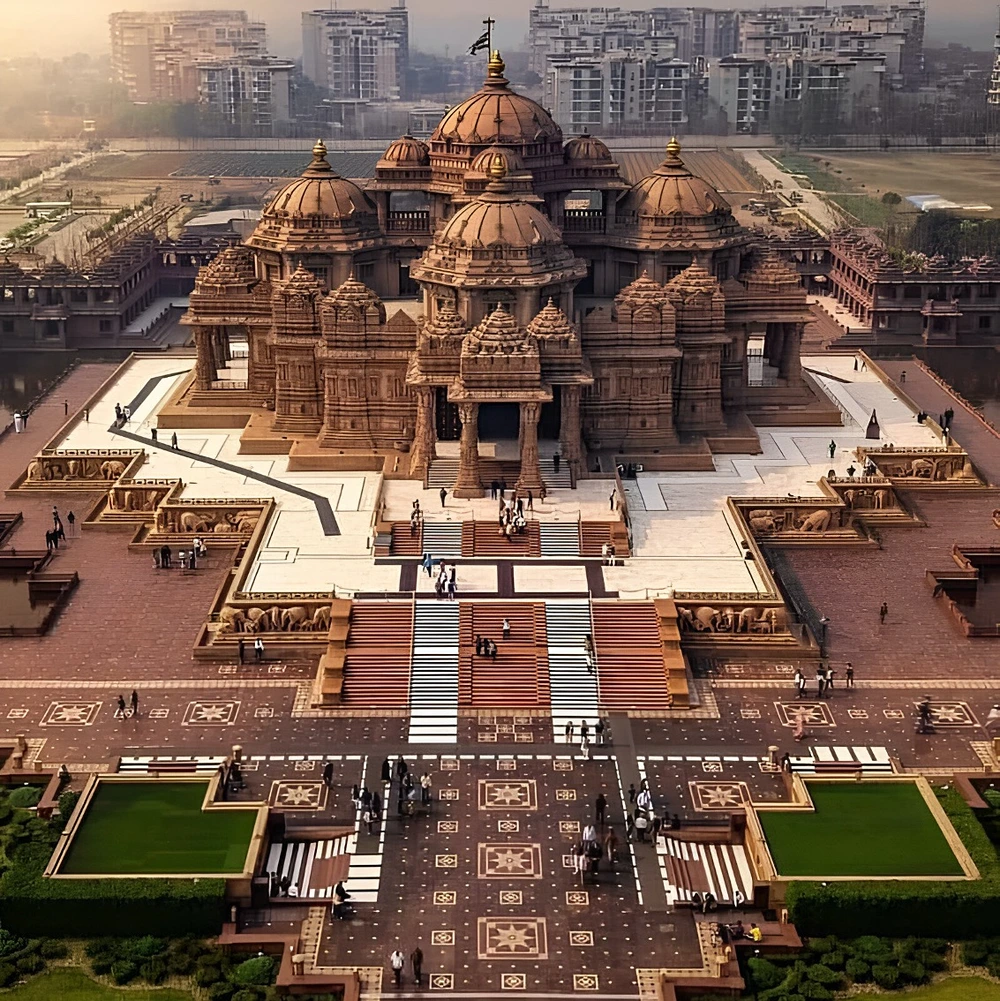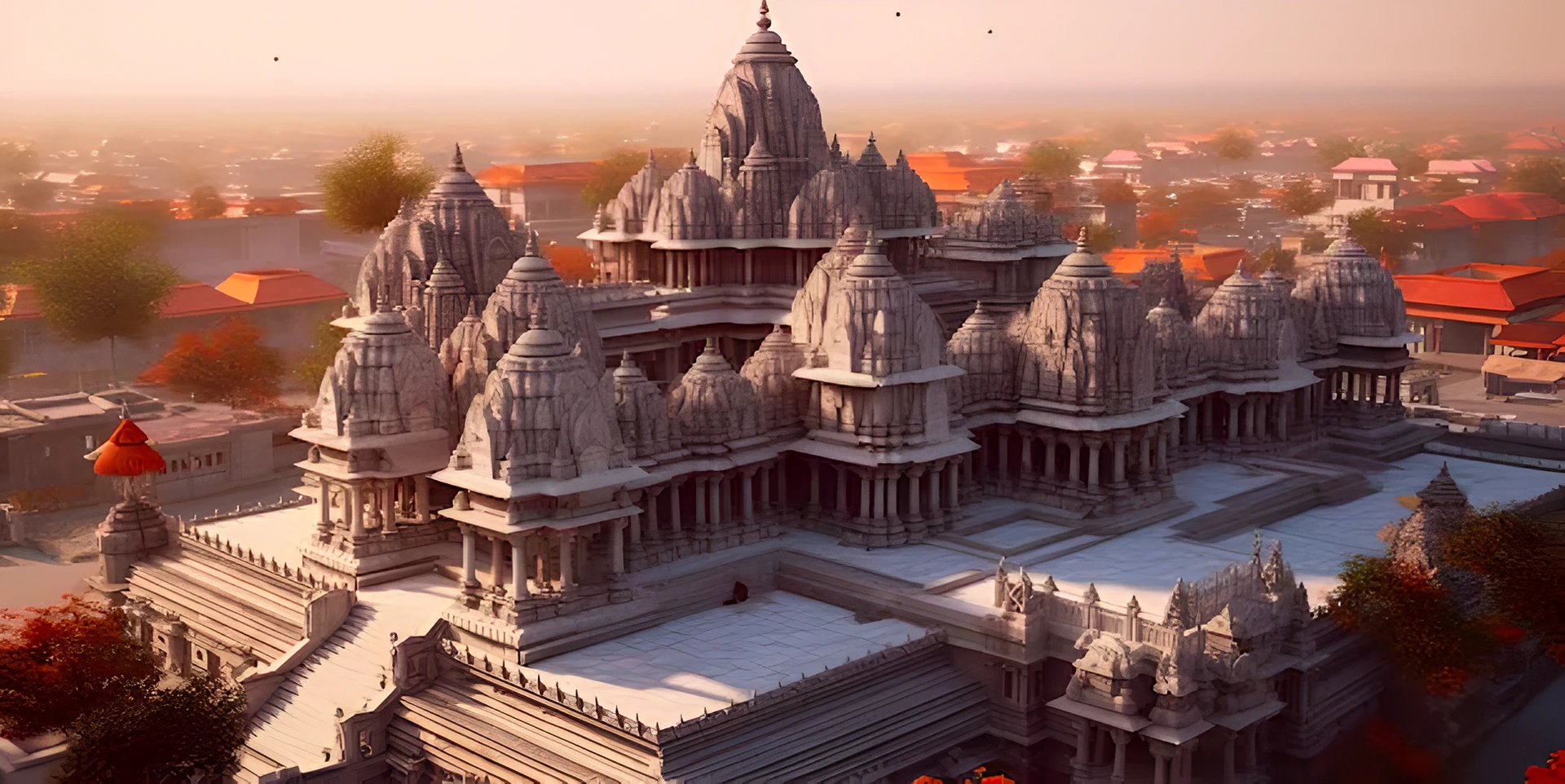
The Ayodhya Ram Mandir, also known as Shri Ram Mandir, is a Hindu temple situated in Ayodhya, Uttar Pradesh. Dedicated to Lord Shri Rama, the temple is constructed at Ram Janmabhoomi – which is documented in ancient scripts worldwide – is the birthplace of Lord Shri Rama. This sacred temple embodies the rich cultural and spiritual legacy connected to Lord Rama, carrying profound cultural and religious importance for Hindus.
With our daily insight on “Ram Mandir: Architecture, Significance, and Other Key Aspects”, we start a journey of profound insights into the heart of cultural and religious heritage. Let us delve into the intricacies of this sacred structure, exploring not only its architectural brilliance but also the deeper cultural and spiritual significance it holds. Join us in unraveling the layers of architecture, important facts, traditions, and devotion contained in and surrounding the iconic Ram Mandir.
Important Facts about Ram Mandir
Chief Architect Chandrakant Sompura, along with his two sons – Nikhil Sompura and Ashish Sompura, led the design of the Ram Mandir. Design guidance was provided by esteemed institutions such as IIT Guwahati, IIT Chennai, IIT Bombay, NIT Surat, Central Building Research Institute Roorkee, National Geo Research Institute Hyderabad, and the National Institute of Rock Mechanics.
The construction was undertaken by Larsen and Toubro (L&T), a renowned construction company. Project management responsibilities were handled by Tata Consulting Engineers Limited (TCEL).
The skilled sculptors responsible for the artistic elements of the temple include Arun Yogiraaj from Mysore, Ganesh Bhatt, and Satyanarayan Pandey.
| Architectural Style | Indian Nagara Style |
| Total Area | 70 Acre (70% Green Area) |
| Temple Area | 2.77 Acre |
| Temple Dimensions | Length – 380 Ft. Width – 250 Ft. Height – 161 Ft. |
| Architectural Highlights | 3 Floors 392 pillars 44 doors |
| Bhoomi Pujan | 5th August 2020 |
| Pran Pratishtha | 22nd January 2024 |
Major Architectural Highlights of Ram Mandir
The Ram Mandir’s design beautifully combines artistic vision and traditional architectural expertise, inspired by studying 550 temples across India. Key features include a robust foundation using roller-compacted concrete and a granite plinth for protection. The Nagara-style main temple, modified in 2020 based on Vastu Shastra, reflects the Sompura family’s craftsmanship legacy. The three-story temple depicts Lord Rama’s journey, with the ground floor illustrating his birth and childhood.
The temple complex, surrounded by a 732-meter-long, 14-foot-wide Parkota, hosts various religious structures like temples dedicated to deities and a significant Sita Koop well. Independent infrastructures, such as sewage and water treatment plants, ensure the complex’s smooth functioning. A Pilgrims Facility Centre accommodates 25,000 people, providing medical and locker facilities. The complex also features lightning protection with 200 KA light arresters and a museum showcasing artifacts, contributing cultural and educational dimensions to the Ram Mandir.

Additionally, the Nagara style of temple architecture, prominent in North India since the 5th century AD, is characterized by fundamental elements like the Sanctum Sanctorum, Mandapa, Shikhara, and Vahana. The Nagara style’s unique features include the Panchayatan Style, river goddess images, an upraised platform, a pillared portico, a distinct Shikhara end, and a Pradakshina Path, adding to its significance in Hindu temple architecture.
Significance of Ram Mandir’s Construction
The construction of the Ram Mandir holds immense significance across various aspects:
Religious Significance:
- It marks the end of decades-long religious conflicts between Hindus and Muslims, fostering religious harmony.
Cultural Significance:
- Ayodhya and the Ram Mandir symbolize India’s historical and cultural heritage, contributing to the preservation and celebration of the nation’s cultural richness.
Promotion of Social Service:
- The temple is expected to encourage the establishment of charitable institutions, promoting social service within the region.
Economic Significance:
- As a major Hindu shrine, the Ram Mandir is anticipated to boost tourism in Ayodhya, stimulating economic growth and job creation.
Infrastructural Significance:
- The construction initiates infrastructural development in Ayodhya, leading to projects like roads, airports, and industries.
Ram Mandir and Ayodhya’s Rejuvenation
The rejuvenation of Ayodhya goes beyond religious aspects:
- A comprehensive plan, inspired by global examples and studying cities like Vatican City, Cambodia, and Jerusalem, aims for efficient land use and infrastructure development while preserving the city’s historical and cultural character.
- Over 200 developmental projects worth Rs 30,923 crores have been launched for Ayodhya’s makeover.
- Major projects include modern infrastructure, beautification initiatives, the Maryada Purshottam Shri Ram International Airport, Ayodhya Junction rejuvenation, road widening, and riverfront development.
Learnings from the Ram Mandir Construction Project:
- Indigenization of Technologies: Traditional Indian technology was employed for the temple’s construction.
- Incorporation of Modern Technology: Advanced digital techniques like 3D mapping and virtual reality were used to document the construction process.
- Secularism and Cultural Integration: Participation of people from diverse religious communities and the use of holy water from 150 rivers emphasize secularism and cultural integration.
- Social Inclusion: Ramps and lifts were installed for the convenience of differently-abled and elderly visitors.
- Environmental Sustainability: Eco-friendly practices, green spaces, and locally sourced materials were prioritized for minimal environmental impact.
- Conservation and Preservation: A Time Capsule was placed underneath the temple, showcasing a commitment to preserving cultural and historical significance.
- Transparency: Throughout the construction, complete transparency was maintained in reporting progress.
- Cultural Diplomacy: The use of soil from Thailand in the consecration ceremony symbolizes Lord Rama’s universal legacy, transcending geographical boundaries.
The completion of the Ram Mandir stands as a testament to India’s rich cultural tapestry, marking a harmonious blend of tradition and modernity. As the temple becomes a focal point for spiritual seekers and tourists alike, the comprehensive rejuvenation plan ensures that Ayodhya evolves into a modern cultural and spiritual hub while retaining its historical charm. The project’s embrace of technology, inclusivity, environmental consciousness, and cultural diplomacy sets a precedent for future endeavors, and emphasizing a commitment to preserving heritage.

